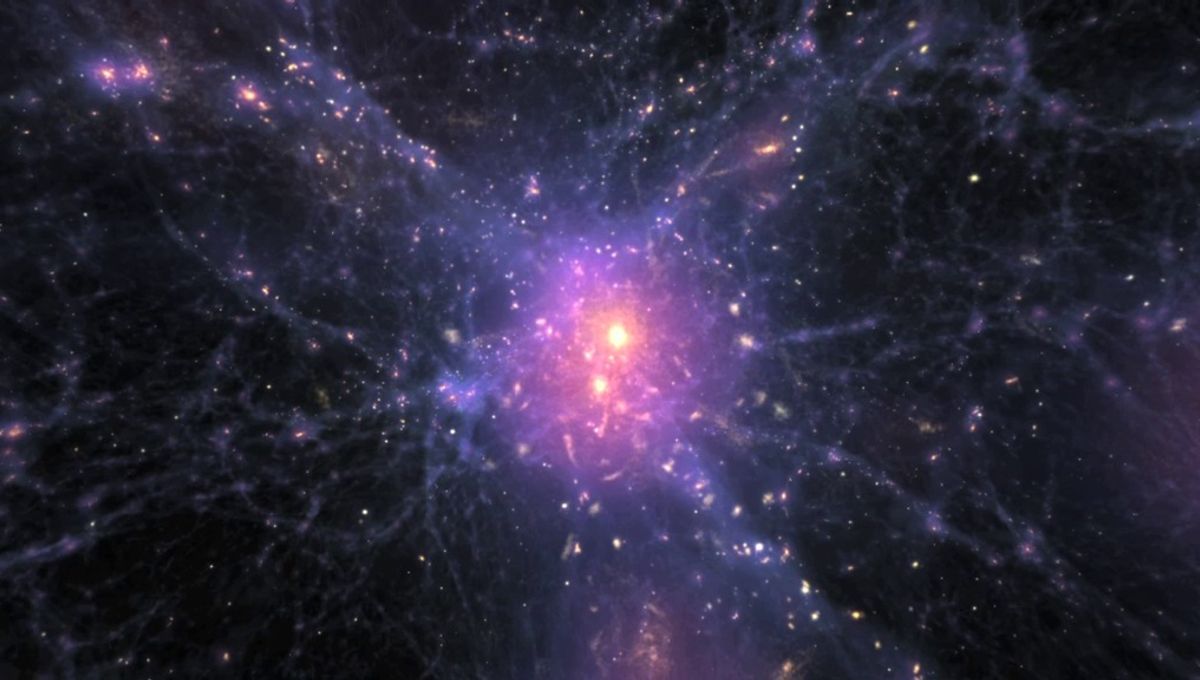
According to our best understanding, the universe should be homogeneous at large scales. This means that it’s ok to have clumps of matter and areas of void, but it should all average out. So it’s ok to have galaxy clusters and cosmic voids, but you won’t find structures extending for billions of light-years. Somebody must have forgotten to tell the universe, because there are several of these structures, and the largest of them all might be even bigger than previously thought.
This structure is the Hercules–Corona Borealis Great Wall, discovered about a decade ago. It replaced the Sloan Great Wall (SGW) as the largest structure: at 1.3 billion light-years across, the SGW was a serious record-holder. But the Hercules–Corona Borealis Great Wall (HerCrbGW) is truly enormous. The latest estimate places the likely extent of the wall at 10 by 7.2 billion light-years. And don’t picture it thin: it is almost 1 billion light-years in thickness.
The Milky Way is about 100,000 light-years across. The Andromeda galaxy is 2 million light-years away. This means that this structure would be 500 times as thick as that distance. It’s a big, big structure.
The question with these walls is whether we are seeing an overlap of different clusters that gives the impression of a single bound structure. Data suggest that this might be the case for the SGW. Could this be true for the HerCrbGW as well? Both the discovery of this structure and this new work are based on gamma-ray bursts (GRBs).
These are the most powerful explosions in the universe, so powerful that each explosion outshines the whole cosmos in gamma-rays. They are caused by either supernovae or neutron star collisions, and the most powerful was able to affect the atmosphere of our planet from 2 billion light-years away.
These are events that are fairly rare but can happen in any galaxy. If the galaxies are equally distributed, maps of these GRBs should be spread out. But there appears to be an overdensity in the northern hemisphere, and that is the HerCrbGW.
“Theoretical models describing the formation of these structures appear to be at odds with the observations,” Jon Hakkila, one of the authors of the new study and a professor at the College of Charleston, told IFLScience in 2015.
“GRBs are detected at a relatively constant rate, which means that the size of the GRB map is slowly growing.”
The new work follows up on the original observations, suggesting that this overdensity is still there, strengthening the case for HerCrbGW (whatever its exact nature is) as well as suggesting that it is larger, longer, and thicker than originally thought.
“We found evidence supporting the existence of the HerCrbGW,” the authors wrote in the paper. “However, we also found evidence that the HerCrbGW is larger than previously identified and that it appears to encompass several smaller clusters. We do not hypothesize what this large structure might represent, other than commenting that it does not appear to be the result of either a statistical fluctuation or a known sampling bias.”
This certainly won’t be the last word on these large cosmic structures. Other enormous oddities have been identified in recent years – again causing debate and perplexity.
A paper describing these observations is accepted for publication in the journal Universe and is available on the arXiv.
Source Link: Most Powerful Cosmic Explosions Reveal Largest Structure In The Universe Is Even Bigger Than Thought